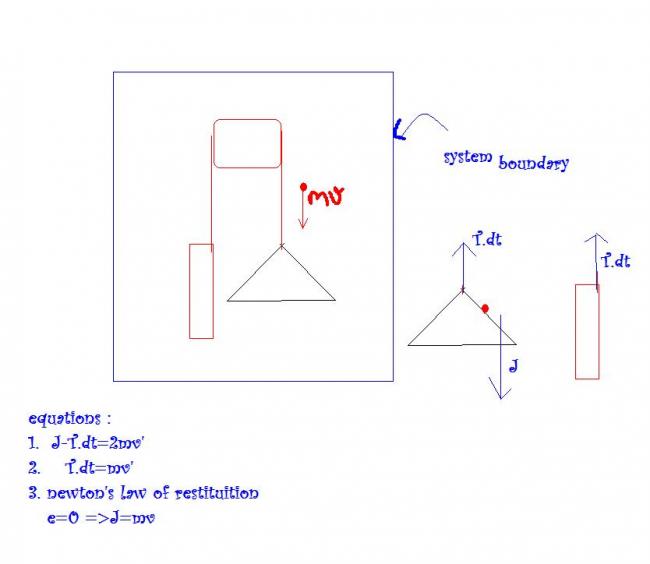hey gr8dreams , plzzzzzz give the equations
A block of mass m and a pan of equal mass are connected by a string going over a smooth light pulley. Initially the system is at rest when a particle of mass m falls on the pan and sticks to it. If the particle strikes the pan with a speed v find the speed with which the system moves just after the collision.
-
UP 0 DOWN 0 0 15

15 Answers
answer is v/3
HINT:1.neglect gravitational impulse
2.impulsive tension =mΔv
3.constraint on length of string leads to the fact velocities
at the ends are equal
4.if at all really tired ref.=HCverma pg.no 155 ex.24
i dunno whether this method is rite or rong.
since we have to find the velocity just after the inelastic collision we can assume that the collision is between a pan of mass 2m and another mass m.
conserving momentum
we have mv=(2m+m)V' implies V'=v/3
if anyone finds that the above post is rong,pls put your reply soon,as i myself not fully convinced,ur reply will help me,dont hesitate to correct me
msp , even i thought of using that eqn............... but i m confused about 1 thing........... the momentum due to the block and the pan-mass system after the collision are opp. in direction............ so can u add them ???
the pan, particle and block forms one system so overall momentum is in
same direction However individual momentum of block and pan are in
opposite direction.
i am not convinced with msp...
it may be that its v/3 just by coincidence. because the same logic does not apply to many other impulse based questions...........
Let the required speed is V.Further, let J1 = impulse between particle and panand J2 = impulse imparted to the block and the pan by the stringUsing, impulse = change in momentumFor particle J1 = mv – mV ....(i)For pan J1 – J2 = mV .....(ii)For block J2 = mV .....(iii)Solving, these three equation, we get V = 3vAns.
